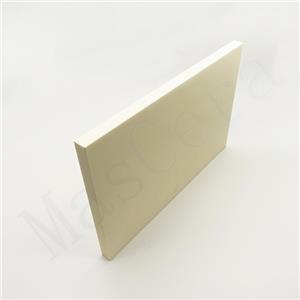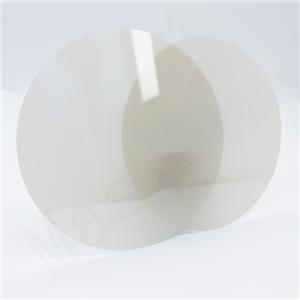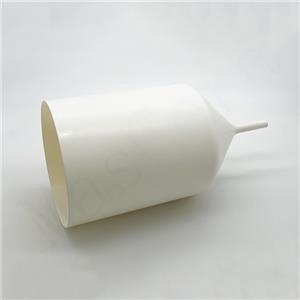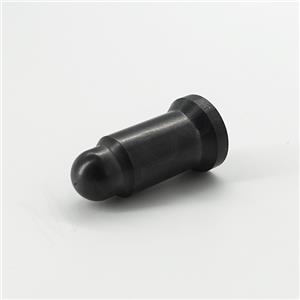Functional Characteristics and Applications of Electronic Insulating Ceramics
Electronic insulating ceramics, also known as insulating ceramics or high-frequency ceramic insulators, play a critical role in modern electrical and electronic systems. These ceramics are primarily used to isolate conductors physically, preventing unwanted current leakage that could disrupt circuit functionality or cause total system failure. Beyond electrical insulation, these ceramics provide essential mechanical support, thermal dissipation, and environmental protection for circuit components.
Unlike ordinary materials, electronic ceramic insulators maintain their dielectric, mechanical, and chemical properties even under elevated temperatures, ensuring long-term reliability in demanding environments.
Key Functions of Electronic Ceramic Insulators
In the electronics industry, insulating ceramics are widely used in a broad range of products, including:
▶ Substrates and packaging materials for electronic circuits
▶ Tube sockets and connectors for vacuum tubes and high-frequency plugs
▶ Switch components, trimmer supports, terminal boards, and coil formers
▶ Protective tubes and ceramic insulating sleeves for vacuum devices, thermostats, and relays
Their functions extend beyond insulation to include mounting, fixing, structural support, and electrical connectivity. For instance, in electric vehicles (EVs), alumina insulating ceramics with metallized sealing are used in relays, fuses, battery connectors, and more.
Types and Properties of Insulating Electronic Ceramics
Based on chemical composition, insulating ceramics can be divided into two main categories:
Oxide Insulating Ceramics: such as alumina ceramic, talc ceramic, forsterite ceramic, and beryllium oxide ceramic
Non-oxide Insulating Ceramics: including aluminum nitride, boron nitride, and silicon nitride
To function effectively as an electronic ceramic insulator, a material must demonstrate the following essential properties:
| Property | Requirement |
| High dielectric strength | Withstand high voltage |
| Low dielectric loss | Efficient for high-frequency |
| High volume resistivity | Excellent insulation |
| Thermal conductivity | Efficient heat dissipation |
| Thermal expansion matching | Compatible with conductor materials |
| Mechanical strength | Withstand mechanical stress |
| Chemical stability | Resist degradation in harsh environments |
Talc-Based High-Frequency Insulating Ceramic
Talc ceramic, derived from natural talc (3MgO·4SiO₂·H₂O), offers low dielectric loss and is widely used in:
▶ High-frequency coil formers and switches
▶ Ceramic shafts and resistor substrates
▶ Small-capacity high-voltage and trimmer capacitors
Its excellent thermal shock resistance and affordability make it ideal for high-impedance components.
Alumina Ceramic as an Insulating Electronic Ceramic
Alumina ceramic insulator is one of the most widely used materials in electronic applications, including:
▶ Ceramic envelopes for vacuum capacitors and microwave tubes
▶ Ceramic windows in power microwave transmission
▶ Substrates for multilayer wiring and IC packages
▶ Vacuum switches, thyristors, and other power electronics
Both white and red alumina ceramics are used, with red alumina typically containing CrO₂ for coloration. In electric vehicles, metallized alumina ceramic components are increasingly applied in relays, fuses, and battery connectors.
Compared with structural alumina ceramics, insulating-grade alumina ceramics demand superior electrical properties, including:
▶ Low dielectric loss
▶ High breakdown voltage
▶ High resistivity
Therefore, the content of monovalent ion impurities (e.g., Na₂O, K₂O) must be strictly controlled to prevent degradation of electrical performance.
95% Alumina Ceramic: The Industry Standard
The most commonly used material is 95% or 96% alumina ceramic, which balances electrical and mechanical performance with lower manufacturing cost, making it suitable for mass production. It also contains minor glass phases, facilitating metallization and hermetic sealing—a key requirement in electronics.
Applications include:
▶ High-power vacuum tubes where high strength and high insulation are critical
▶ Vacuum capacitors, with breakdown voltages ~10x higher than air capacitors
▶ Microwave tubes and energy transmission windows using 95–99% alumina
▶ Vacuum interrupters in circuit breakers for power grids and industrial systems
▶ Ceramic vacuum tubes, comprising insulating ceramic housings with embedded electrodes
Applications in LED Lighting and Electrical Appliances
Alumina ceramic insulators are also crucial in LED lighting, where they serve as ceramic lamp cups and printed circuit substrates (see Fig. 5 and 6). Their thermal conductivity and electrical insulation ensure long lifespan and reliability. Ceramic lamp holders (Fig. 7) in electric light sources are another common application.
Automotive Applications: Ceramic Spark Plug Insulator
One of the most critical automotive applications of electronic insulating ceramics is the ceramic spark plug insulator.
The ceramic spark plug insulator is typically made from alumina ceramic due to its:
▶ High dielectric strength
▶ Excellent thermal shock resistance
▶ Resistance to combustion gases and vibration
▶ High mechanical strength and electrical insulation
▶ These characteristics ensure the stable ignition of internal combustion engines under harsh conditions. With the shift toward fuel-efficient and high-performance engines, the demand for ceramic spark plug insulators continues to grow.
Insulating electronic ceramics are essential to modern electrical and electronic systems. From traditional vacuum tubes and microwave devices to next-generation electric vehicles and automotive ignition systems, materials like alumina ceramic insulator, talc ceramic, and ceramic spark plug insulator enable safe, stable, and efficient operation. With their excellent dielectric, thermal, and mechanical properties, these materials will remain key to advancing high-voltage, high-frequency, and high-temperature applications.




